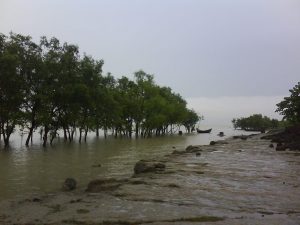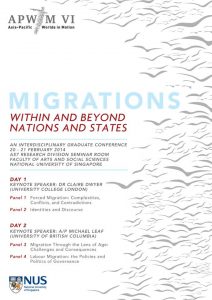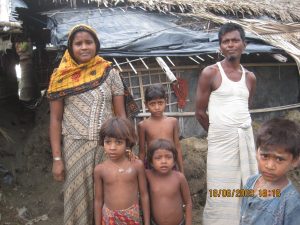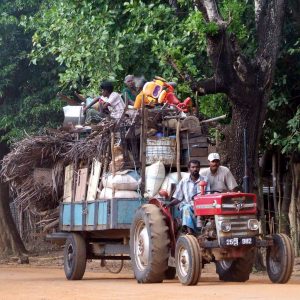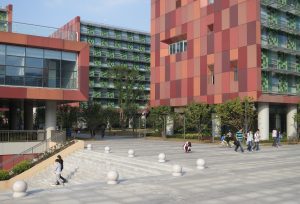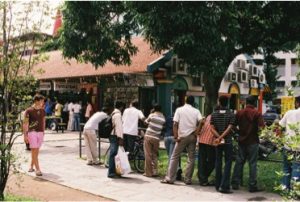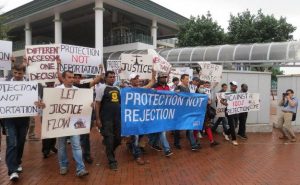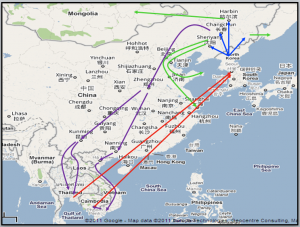Multicultural Policy in South Korea and its Implications for Social Inclusion of Multiethnic Youth
Memo #391 By: Léo-Thomas Brylowski – ltbrylowski [at] gmail.com A record number of children born from mixed marriages are starting to make their way through South Korea’s public schooling system since the country’s multicultural turn in 2007. These children represented less than 0.5% of all students enrolled in Korean public schools in 2010, but are […]
Migration Crisis on Southeast Asian Shores: Individual or Regional Responsibility?
Memo #338 By Kazi Fahmida Farzana – fahmida [at] uum.edu.my On May 10–11, 2015 some 2,000 new Rohingya migrants from Myanmar landed in Malaysia and Indonesia. Many others are believed to have lost their lives in this desperate journey, while hundreds are still drifting on the high seas. By seeking asylum on the shores of Southeast […]
Third Culture Kids and the Rise of a Cosmopolitan Ethos in the Asia-Pacific
Memo #289 By Grégoire Legault – gregoire.legault [at] alumni.ubc.ca The world is changing, thanks in great part to unparalleled levels of migration. According to the United Nations, more than 230 million people were living outside of their countries of birth in 2013, many of them originally born in Asia. Conceptually, foreign-born residents of third countries already […]
The Rohingya, Ethnic Minorities, and Myanmar’s Enduring Dilemma
Memo #285 By Kazi Fahmida Farzana – fahmida [at] uum.edu.my Will Myanmar’s Political Transition be able to Solve the Lingering Nationality Question of its Ethnic Minorities? Myanmar in recent years has been experiencing substantive political changes in its political system with implications for its domestic policies and international relations. Since its November 2010 national elections, […]
Gaps in the Protection of Civilian Victims of Armed Violence
Memo #281 By Ramesh Thakur – ramesh.thakur [at] anu.edu.au As demonstrated by recent events in Sudan, Sri Lanka, Libya, and Syria—and earlier in Rwanda, the Balkans and East Timor during the 1990s—the numbers of civilians killed in contemporary armed conflicts is intolerably high. Their plight is a lasting stain on an internationalized human conscience. Our […]
NYU Shanghai and the Future of International Higher Education in China
Memo #261 By Joel Heng Hartse – joelhartse [at] gmail.com New York University Shanghai recently completed its first semester of operations. Though NYU Shanghai was recently touted by National Public Radio as the first Sino-U.S. joint university, there are in fact hundreds of approved joint-degree programs and more than thirty jointly run Sino-foreign universities operating in China—and the […]
Migrant Labour in Asia: Singapore’s Recent Riot
Memo #260 By Wajihah Hamid – wajihah.hamid [at] gmail.com Riot, angry mob? Surely unheard of in Singapore? But on Sunday, December 8, 2013, a fatal traffic accident involving a migrant worker in Singapore’s Little India sparked an angry reaction from the area’s low-waged migrant workers that morphed into a riot. Temporary labour migration is the […]
Hong Kong’s Untenable Refugee Policies
Recent demonstrations protesting Hong Kong’s zero-recognition refugee policy in April 2013 brought renewed attention to a crisis situation regarding asylum seekers in the territory. Since 2004, 12,300 asylum seekers have filed claims with Hong Kong’s Immigration Department asking to be allowed to remain on the grounds that they face torture if returned to their countries, but only one has ever been granted refugee status. Hong Kong’s refugee recognition rates are well below the international average of 13.8% reported by the United Nations, and the 20% to 38% recognition rate in liberal democracies.
The Complexity of North Korean Migration
Just imagine you’re a North Korean living in a small village. You have no one to compare your condition with. One day, you hear about people who’ve fled to China who are now well off. Some even go to South Korea, a place you know about from smuggled DVDs. You know that if caught, you could be sent to prison and beaten by guards. If successful, such migration promises a better life.
Is ‘Safe Migration’ Along the Thai-Lao Border Truly ‘Safe?’
Memo #157 – Since the late 1990s, international organizations and NGOs have engaged with labour migrants in the Mekong region. This includes either advocating for migrants’ rights, or launching anti-trafficking programs. More recently, the term “safe migration” has surfaced within policy circles and the broader aid community with several organizations implementing “safe migration” programs.

